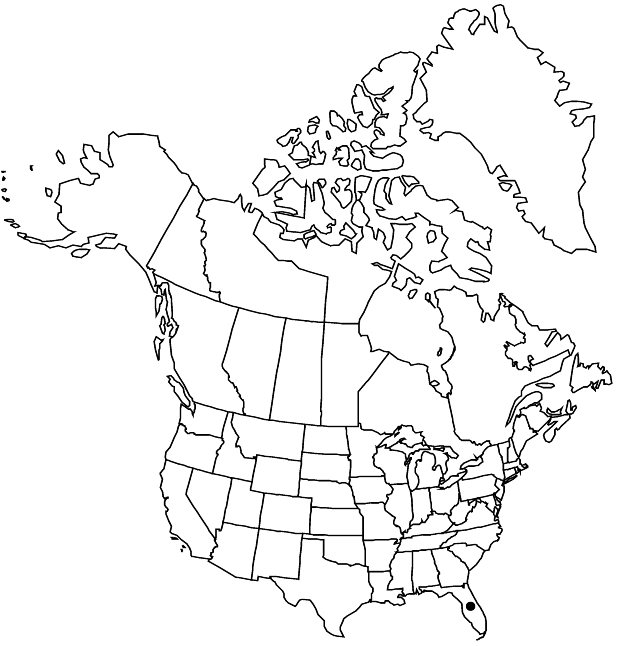Jacquinia arborea
Eclog. Amer. 1: 26. 1797 ,.
Shrubs or trees to 5 m; twigs grayish brown, lepidote when young, glabrescent. Stems gray, nearly smooth. Leaves usually distinctly pseudoverticillate; petiole to 7 mm, glabrous or sparsely puberulous; blade 3–8(–12) × 1.5–4(–5) cm, coriaceous, margins slightly revolute, apex rounded or retuse, mucronate or mucro absent. Racemes 7–25(–40)-flowered, to 6(–12) cm, commonly exceeding leaves. Pedicels 7–13 mm; bracts lanceolate, 1–1.5 mm. Flowers: sepals 2.2–3.2 mm, margins entire or slightly erose; petals 7–9 mm, lobes ca. as long as or slightly shorter than tube; stamens shorter than staminodes; staminodes oblong to ovate, 1.8–3 × 2–3 mm, apex rounded or retuse. Berries orange-red or red, 7–11 mm diam., pericarp smooth. Seeds light brown, 3–5 mm.
Phenology: Flowering winter–spring.
Habitat: Coastal strands, disturbed sites, mangrove forest edges
Elevation: 0-10 m
Distribution

Fla., Mexico, West Indies (Jamaica, Lesser Antilles, Puerto Rico), Central America (Honduras).
Discussion
Cultivated and escaped in Florida, Jacquinia arborea is occasional in disurbed coastal communities of Broward and Miami-Dade counties and the Monroe County keys.
Selected References
None.